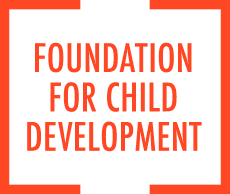https://www.fcd-us.org/pk-3-education-programs-and-practices-that-work-in-childrens-first-decade/
Arthur Reynolds, Katherine Magnuson, and Suh-Ruu Ou synthesize evidence on the contribution of PK-3 programs and practices to children’s school success. The authors analyze data from the Early Childhood Longitudinal Study-Kindergarten Cohort of 1998-99 (ECLS-K) to show links between PK-3 components and children’s performance in grade 3. The analysis shows that children participating in educational programs that include PK-3 program components perform better in school than their peers who do not. Emerging evidence on the economic benefits of PK-3 programs and practices also is reviewed. The authors conclude that a critical mass of evidence in support of PK-3 now exists.
The paper begins with a review of the knowledge base on the effectiveness of PK-3 intervention programs and practices for young children entering elementary school. The review includes the following components of extended early childhood interventions: pre-k programs, full-day kindergarten, reduced class sizes in the early grades, parent involvement, instructional practices, and school transitions. After summarizing the evidence in each of these areas, the authors review evidence on the cost effectiveness of PK-3 programs and practices with particular attention to findings from relevant longitudinal studies. They conclude with a discussion of the implications and policy recommendations from this evidence.
Reynolds, Magnuson, and Ou review evidence from four studies of high-quality extended early childhood programs. These include the Carolina Abecedarian Project, Head Start/Follow Through, the Chicago Child-Parent and Expansion Program, and the National Head Start/Public School Early Childhood Transition Demonstration Project. Analysis of these programs corroborates the findings from the ECLS-K data.
Children who experience PK-3 program components perform better in third grade than those who do not. Their analysis also demonstrates the importance of receiving multiple PK-3 components. Those who experience all components perform better than those who experience only half, and those who experience half perform better than those who experience none. Teacher reports of skills and skills assessments point to a three to four month improvement in school achievement for students who experience PK-3 components. These findings add to the growing empirical support for PK-3 programs and practices.
The authors also review evidence on the effects of PK-3 program components, including pre-k, full-day kindergarten, reduced class sizes, teacher and classroom experiences, parent involvement, and school mobility/stability. All except full-day kindergarten consistently demonstrate enduring and sizable links to school achievement. The authors also find evidence that teacher background and training, the quality of the teacher-child relationship, and a significant focus on child-centered instruction is linked to better school performance.
Finally, the authors provide an economic analysis of PK-3 programs and practices, concluding that the economic benefits of PK-3 exceed its costs. The highest economic returns observed are from preschool programs, which range from $4 to $10 per dollar invested. The CPC results show that an established public-school program can generate substantial returns, which has significant implications for larger scale implementation. Although the costs of the programs are significantly different from each other, the economic returns of each program far exceeded the initial investments. The total economic benefits per participant, both measured and projected over the life course, ranged from about $60,000 to $140,000.
The authors conclude with the implications and policy recommendations from this evidence. They call for an expansion of a PK-3 approach to education. Their review describes some examples that could be implemented on both smaller and larger scales, such as the school-based Chicago Child-Parent Centers. In cases where integration of all PK-3 components may not be possible, the authors suggest that individual PK-3 components could be emphasized separately or in combination. The authors offer four major recommendations:
- Disseminate PK-3 programs and practices based on key principles of effectiveness.
- Use evidence on cost-effectiveness to better prioritize funding of PK-3 programs.
- Educate policy makers and administrators about the advantages of PK-3 programs.
- Develop new funding mechanisms for PK-3 programs.
